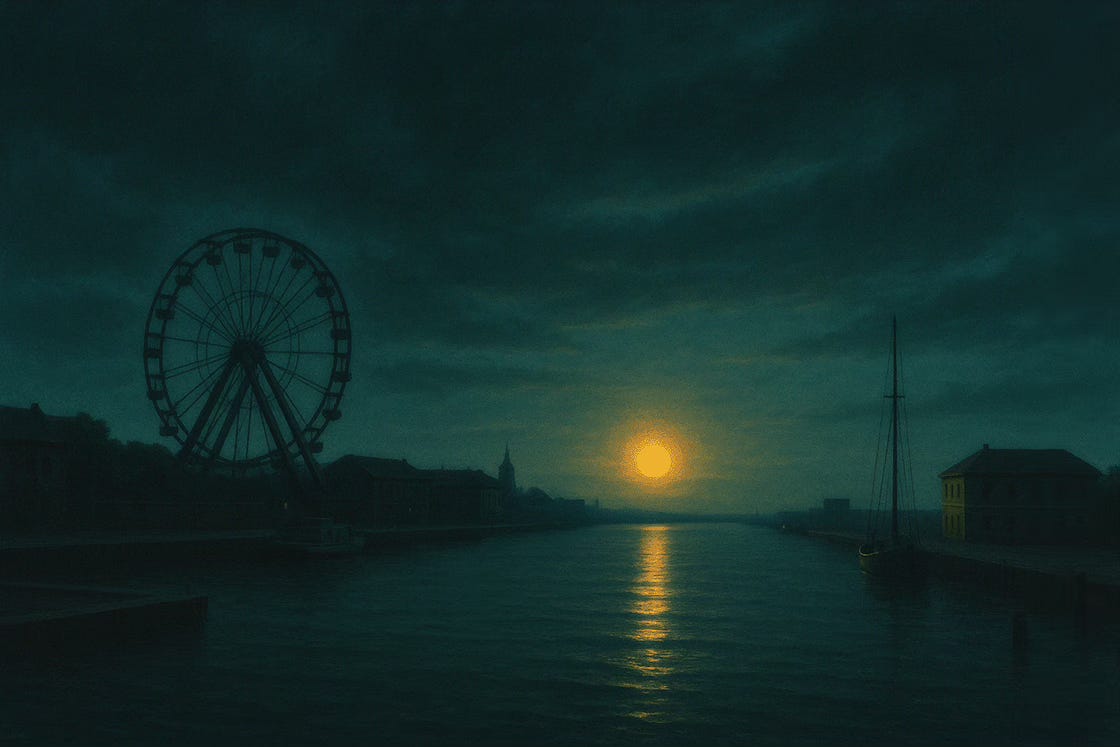The Importance of Diving Deep, 80s DeVry Style
The Daily Drucker. Organizational Theory. Insurance. Tom Cruise Movies.
I’ve been tinkering on a non-fiction project of late that takes the useless knowledge I often peddle and combines it with a nugget that makes one think, maybe.
I read the book The Daily Drucker about fifteen years ago and dutifully turned the page each morning, all the while trying not to skip ahead. Mostly, I found myself getting behind due to travels and the toils of life. But now and then, I still stumble upon the author’s work in spirit. My favorite, Culture eats strategy for breakfast (Note, Drucker never actually said it). The C-Suite shouted it down from on high in the early 2000s. Recently, I heard it mentioned on a podcast in reference to billboards and T-shirts. There is money in branding.
But, if we’re getting cute with words, I have no idea what the saying means. Can culture eat anything? My dog eats kibble; sometimes vomits it up too. I know this is a metaphor, at least I think it is.
Maybe companies eat other companies for breakfast (though multi-million dollar mergers should be handled over lunch). We’ll extend that to the now quaint yet divisive at the time political statement from Mitt Romney: Corporations are people too.
I’m unsure where I’m going with this, but I believe how organizations structure themselves matters. A Vergecast podcast host asks this question to CEOs: Can I see your org chart? It’s a great question, but companies change frequently. Leaders switch seats. Attrition happens. Succession keeps Human Resources up at night.
And reorganization often increases stock price.
So maybe the organizational structure alone doesn’t matter—at least, not by itself.
Let’s take this to the next level. Take an industry. Review its peers. And then find the one that does not belong. My favorite is insurance. If you rank the top property casualty companies in the US by market cap, you find the following: Berkshire Hathaway (Geico and others), Progressive, Travelers, Allstate, Hartford, and the list goes on.
Notice that arguably the largest isn’t on this list—State Farm Insurance. Well, it’s a mutual company. I’d argue that it thinks about the market from a different perspective. The business model has a certain tweak; money flows to the policyholders instead of the shareholders. But if you dig deeper, you might notice something else hiding in plain sight.
Location: Bloomington, IL. It’s a magical land, producing electric cars and chocolate these days too. And another large mutual company resides in the same town, Country Insurance. What’s in the water that sprouts mutual companies in Central Illinois? The origin story? The customer set? Shared values?
Drucker may be right. Culture does eat strategy for breakfast because it’s the organizational chart, location, customer set, and values all rolled into one. It’s the company… maybe.
Thinking about insurance then led me to the education market. And then, I remembered a team dinner in the ‘90s that influenced my career. The details are hazy, but the legends we create, the stories we tell matter—they really do.
What’s next is very much a work in progress, I don’t know if my Daily Drucker will make it off the cutting room floor. But here we go, for the paid clan only. Thanks for reading.
IBM Stories
I remember joining IBM in the late 90s. Time has a tendency to blur, stretch even. A part of me believes I worked there in the 80s but that’s just the nostalgia talking. I suppose that’s why my kid calls me ancient. Yet, I will forever remember a team dinner I’m fairly sure I never attended; still, to this day, people claim I was there.
Let’s set the stage.


